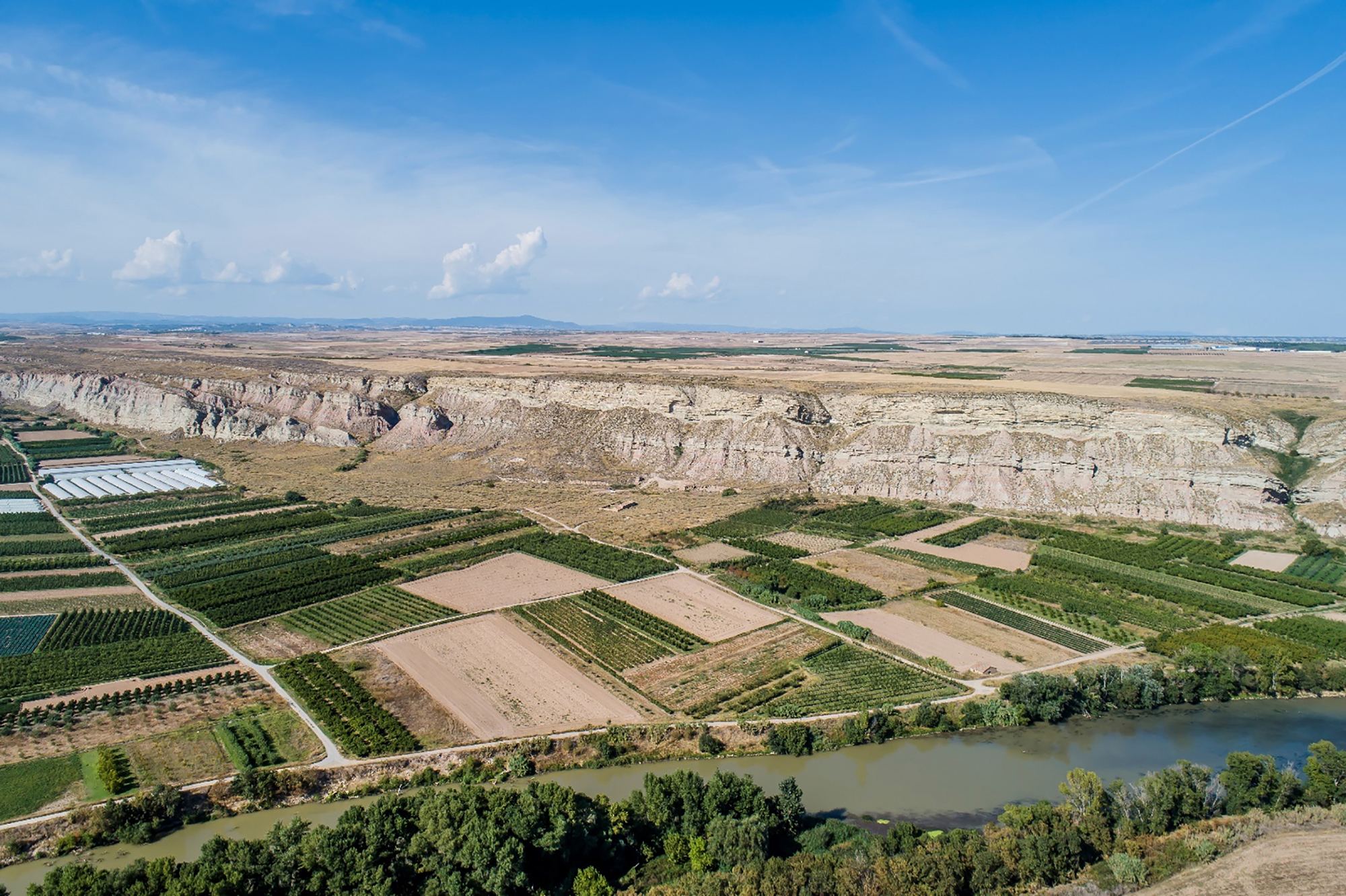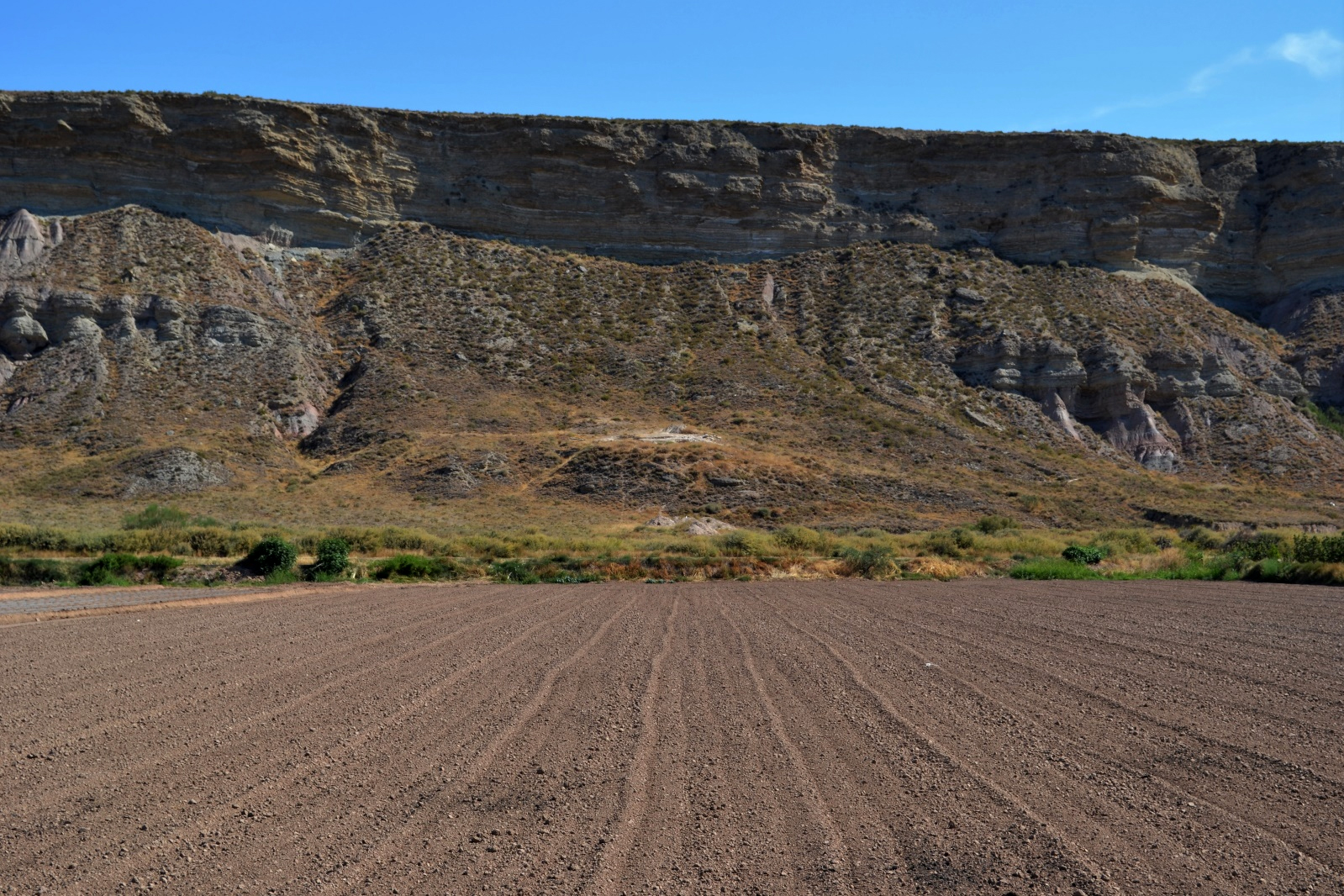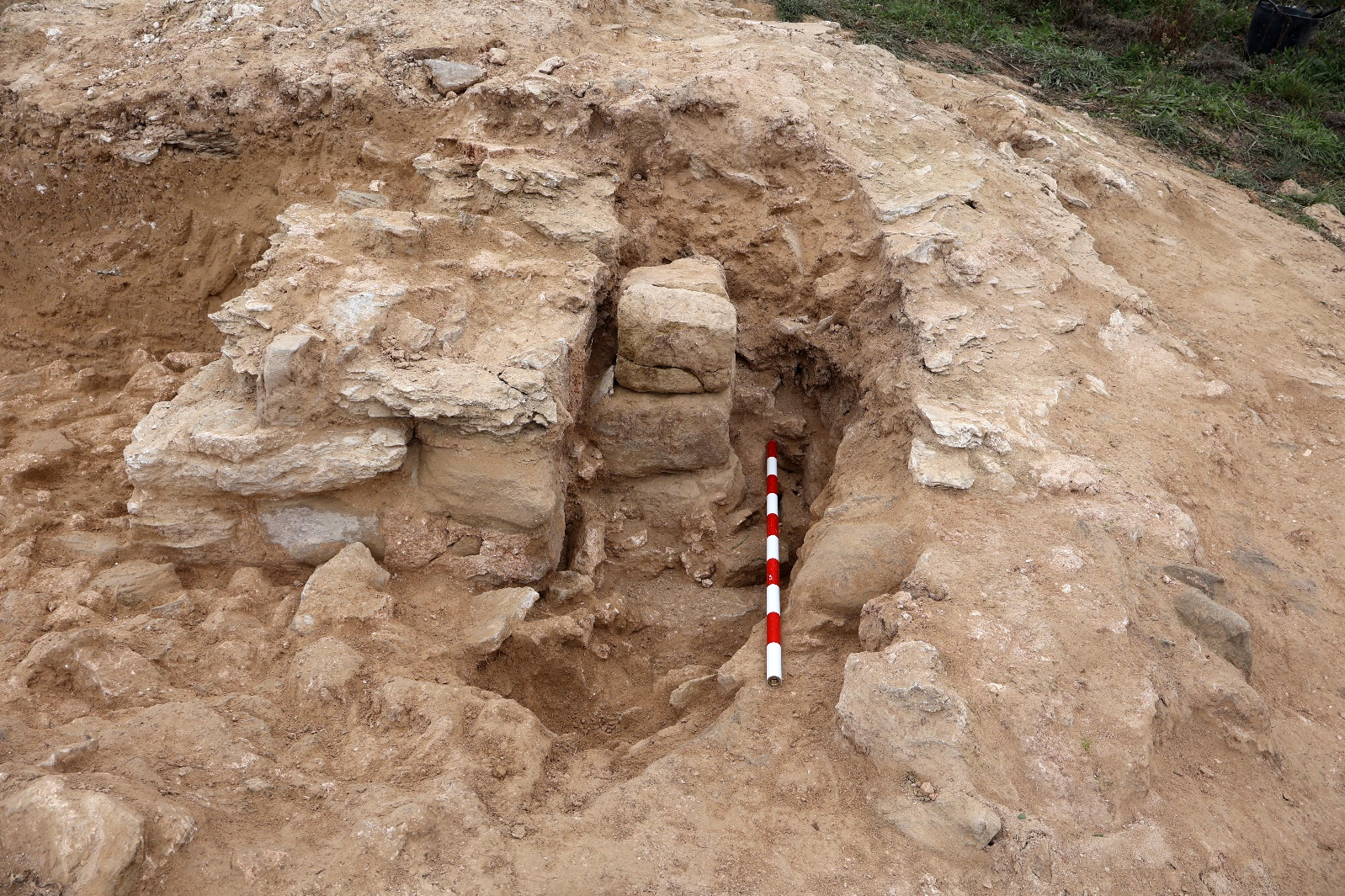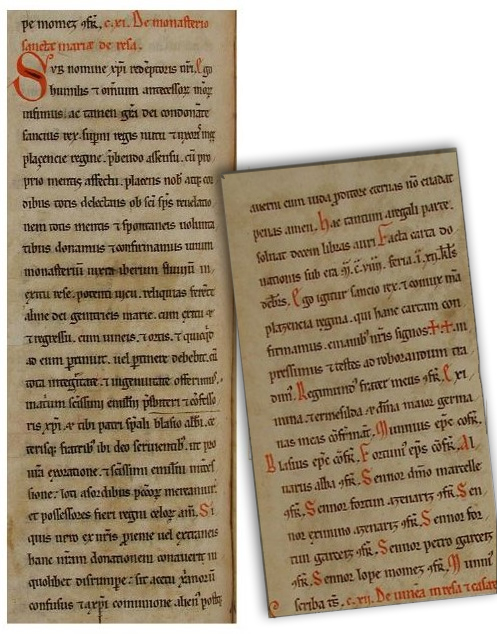In the wake of the old border of the Ebro
- In the town of Andosilla, in the Ribera de Navarra, archaeologists and groups of citizen volunteers from Aranzadi are carrying out an archaeological excavation that is giving many surprises. In the site of Resa, they have found, among other things, clues to better understand the societies of the Upper Middle Ages, which until now is very unknown to us. And we can also find out from their analysis how the Kingdom of Pamplona controlled its southern borders, along with the opening of new questions.

The scenery is spectacular in this corner of the Ribera. Leaving behind the village of Sartaguda, the Ebro River draws large meanders to our right. A dense network of canals provides extensive irrigated shrubs—irrigated horticultural plantations of Islamic origin—covering the surrounding plains: plantations of fruit trees, greenhouses, and stonemasons to the point where the eye is lost. A line of trees marks where the river goes; on the other side, as they say here, Castile. On our left, on the other hand, a gigantic cliff of red-grey plaster watches over the road in constant change under the erosion caused by wind and water.
Between the abyss and the plain, a small hill gives attention. Facing south, it has an excellent view over the whole area and is protected by the abyss on the back. For a long time only shepherds and hunters have visited the site but, since 2018, the displacement has increased significantly: citizens, university students and archaeologists of the Aranzadi Science Society can often be seen working there, cleaning the remains of old walls among the dust. We are located in the archaeological site of Resa.

Stones, bones and wine
The name Resa is not a stranger in Andosilla and the surrounding villages. The surnames Resa and Resano are very common in the region. In addition, it is also very present in the toponymy of the Ebro area: the riverbanks are called Soto de Resa, while the pastures located above the ravines are called Val de Resa. Thus, it has been a well-known fact among the residents that there was a missing village in the area, despite the fact that its exact location, size and character were a mystery.
In order to recover this memory, the Andosilla City Council and Aranzadi launched archaeological explorations in 2018 under the direction of Juantxo Agirre Mauleon. Without delay, they brought to light a more complex story than they had imagined: The remains of the Iron Age, the ruins of a rich Roman villa, the signs of a climate crisis that occurred in the 3rd century... but undoubtedly the most representative remains that Resa has provided so far are those of the Middle Ages.
In the center of the site there are traces of a church of great dimensions. It is made of gypsum and has been strongly affected by erosion, but it is still evident that in its time it was a monumental building designed to be seen from afar. The style of construction clearly shows that it dates back to before the Romanesque expansion in Navarre. It has a rectangular plant with the main entrance to the south. Under the fallen wall fragments, dobels of several columns and arches have appeared, indicating that the interior was divided into longitudinal naves. In addition, traces of a presbytery, the apse and the altar have also appeared in the eastern part. This shows us that the Mozarabic rite was practiced in the Church –XI. The prelude to the Roman rite was extended in the twentieth century by the strengthening of the authority of the popes – which is in accordance with the dates obtained by radiocarbon: the building X.-XI. It was mainly used for centuries.

The apse and altar of the church of Resa. Photo by: Aranzadi Science Society.
Where the church is located, there is usually a cemetery, and Resa is no exception: two stone boxes have appeared on top of each other against the north wall. On the bottom were the remains of a two- or three-year-old baby, while on the top were those of an adult woman. At the moment, it is a mystery if there was a family relationship between them.
But the necropolis of Resa covered a much wider area and, until now, more than 40 tombs have been identified and 13 have been excavated; all of them were buried according to the Christian rite. The dates made have come as a surprise: the most modern dates date back to the 12th century – similar to the church period – but the oldest dates go back to the 6th century, and archaeological data from that period are very scarce in Navarre. It is therefore an important discovery to begin to get to know the societies of the Upper Middle Ages better.
A few meters from the church there have also been traces of a wine cellar. It has two large troughs to crush the grapes, from which a tube runs to carry the must to a reservoir. Although it may seem surprising from the present point of view, it was common in the Middle Ages for such people to be around the churches. The building could be in the hands of a private owner, which gave him the right to take possession of goods of different kinds (fields, vineyards, mills...), of course, also to make an economic profit.
The results of archaeological research will help us to analyze how the kings of Pamplona reorganized the territory after the conquest of the Muslims in the 10th century
A post-conquest landscape
Thanks to the excavation we know that, a thousand years ago, the location of Resa in Andosilla was important. That these centuries were a period of expansion for the Kingdom of Pamplona, which conquered several territories around the Ebro to the Muslims. The name Resa itself appears for the first time in this period, among the conquests of King Sancho I in 908. In subsequent years, this town would become a strategic frontier fortress – it was the seat of a tenancy with a castle – at least until the conquest of 1045.ean Calahorra and Tudela in 1119. Therefore, the results of archaeological research are very valuable for the study of the reorganization of the territory by the kings of Pamplona in the post-conquest period.
Thanks to the old documents we know that the kings of Pamplona had economic interests in Resa that were articulated around the churches. We find the Kings Sancho IV and Placencia, owners of a church dedicated to Santa María, located “on the banks of the Ebro River, at the exit of the fortified village of Resa”, a church that was abandoned in 1071 to the monks of Donemiliaga and with it several vineyards and orchards, among other possessions.

Donation document of the Church of Santa María de Resa in 1071. In the picture: Monastery of Donemiliaga.
Probably the church mentioned in that document is the one that has been excavated by archaeologists. But, seeing that the necropolis is much older, it is possible that this church has not been built from scratch. In fact, if there had been a temple in this location before, it is possible that after the conquest of 908 the kings of Pamplona promoted its reconstruction as a symbol of the new power. And it would not be surprising if the new building were transferred to the property of the monarchy to take control of the economic goods in the conquered territory, that is, the vineyards and orchards to which the text refers, and to manage their profits.
Two kingdoms, one border
Resa's story isn't, but, uh, she's exhausted there. King Sancho IV was assassinated a few years after his donation, in the abyss of Peñalén, as a result of a plot by the nobility of the kingdom. Immediately afterwards, the Spanish and Aragonese armies invaded and divided the kingdom of Pamplona, which did not regain its autonomy until 1134. Since then, Resa stopped at the border between the kingdoms of Pamplona and Castile and was transferred again and again; in 1221 it finally stopped at the hands of Navarre, with the border stabilized at Ebro.
In 1246, the monks of Donemiliaga entrusted the church of Santa María with all its properties to the cathedral of Calahorra. By then, it seems that Resa was already in decline, losing its old border function. By 1350, only the château was living there; and soon after, the citizens of Andosilla and Cárcar signed an agreement to distribute the land of the town and use it as a pasture.
.jpg)
Tolarea of Resa. Photo by: Aranzadi Science Society.
The site of Resa, therefore, can provide more surprises in the future. Archaeologists plan to continue their work because many questions remain unanswered. Where was the medieval village located? What qualities did he have? How did the locals live? What was the castle like and what was its dependent territory? Has the trajectory of the Ebro changed over time? What effects has this had on the preservation of the archaeological record? Only research will provide the answers to these questions. And on the way, it will also raise new questions.
.jpg)
Resako ikerketa arkeologikoa auzolanean gauzatu da, Aranzadik ohikoa duen filosofiari jarraiki. Haiekin batera, hasieratik boluntario-talde bat aritu da landa-lanean; gehienak Andosillatik datoz, baina badira Sartagudakoak eta San Adriangoak ere. Manex Arrastoa Mendizabal indusketako koordinatzaileak azaldu duenez, herritarrek lehen eskutik parte har dezakete ikerketa prozesuan, eta ikerlariek tokiko ezagutza, kezkak eta lehentasunak jaso ahal izan dituzte ondareari bere balio osoa emateko.
Maricer Itarte Sadaba da boluntario-taldearen koordinatzaileetako bat. Kultur ondarea berreskuratzeko ez ezik, herritarren arteko harremanak indartzeko tresna gisa ere ikusten du auzolana. Hala, parte-hartzaileen artean dinamika polita sortu dela azaldu du; asko urtero etortzen dira, eta egindako lana herritarren artean zabaltzen laguntzen dute gero.
2022. urteaz geroztik, auzolandegian unibertsitateko Historia eta Arkeologia ikasleak ere aritu izan dira; parte-hartze horrek formazio praktikoa eskaintzen die. Kasu honetan ere bada urtero errepikatu duenik, eta, aztarnategia ezagutu ahala, ardurak hartzen joateko aukera izan dute, edo aztarnategiko materialak beren ikasketa-prozesuan txertatzeko Gradu edota Master Amaierako Lanen bidez.
Arkeologia, beraz, ez da ikerketa-kontu soila. Balio sozial bat ere badu herrigintzari lotuta; gizartearentzako esanahiak jostea baita kultur ondarearen funtzioa, ekintza kolektiboaren bidez.
Aranzadi Zientzia Elkarteko Etnografia Sailaren zuzendari berria da Maite Errarte Zurutuza (Beasain, 1995), urrian Fermin Leizaolaren lekukoa hartu ondoren. Kultura materiala aztertzen jarraitzeko beharra azpimarratu du, gizartearen memoria eta bizimodu aldaketak erregistratzeko... [+]
Atapuercako aztarnategian hominido zahar baten aurpegi-hezur zatiak aurkitu dituzte. Homo affinis erectus bezala sailkatu dute giza-espezieen artean, eta gure arbasoek Afrikatik kanpora egindako lehen migrazioei buruzko teoriak irauli ditzake, adituen arabera.
Martxoaren 30erako Iruña-Veleia martxan, SOS Iruña-Veleia eta Euskeraren jatorria elkarteek manifestaziora deitu dute, Aski da! Argitu, ez suntsitu lelopean. Azken bi urteetan "hondeatzaileak sistematikoki eremu arkeologiko oso aberatsak suntsitzeko modu... [+]
Ethiopia, 24 November 1974. Lucy's skeleton was found in Hadar, one of the oldest traces of human ancestors. The Australian hominid of Australopithecus afarensis is between 3.2 and 3.5 million years old.
So they considered it the ancestor of species, the mother of all of us. In... [+]
While working at a site in the Roman era of Normandy, several archaeology students have recently made a curious discovery: inside a clay pot they found a small glass jar, of which women used to bring perfume in the 19th century.
And inside the jar was a little papelite with a... [+]
A team of researchers led by the Japanese archaeologist Masato Sakai of the University of Yamagata has discovered numerous geoglyphs in the Nazca Desert (Peru). In total, 303 geoglyphs have been found, almost twice as many geoglyphs as previously known. To do so, researchers... [+]
Treviño, 6th century. A group of hermits began living in the caves of Las Gobas and excavated new caves in the gorge of the Laño River, occupied since prehistory. In the next century, the community began to use one of the caves as a necropolis. In the 9th century they left the... [+]
On August 1, a dozen people from the family were in Aranguren. Two young people from Aranzadi made firsthand the excavations and works being carried out in Irulegi. This visit is highly recommended, as it reflects the dimension of the work they are doing.
Halfway, at the first... [+]
In the desert of Coahuila (Mexico), in the dunes of Bilbao, remains of a human skeleton have been found. After being studied by archaeologists, they conclude that they are between 95 and 1250 years old and that they are related to the culture of Candelaria.
The finding has been... [+]
The Roman city of Santakriz is an impressive archaeological site located in Eslava, near Sangüesa. Apparently, there was a fortified people of the Iron Age, and then the Romans settled in the same place. Juan Castrillo, himself a priest of Eslava, gave the site for the first... [+]
This winter the archaeologists of the INRAP (National Institute of Preventive Archaeological Research) have found a special necropolis in the historic centre of Auxerre (French State), a Roman cemetery for newborn babies or stillbirths. - Oh, good! The necropolis used between... [+]
























